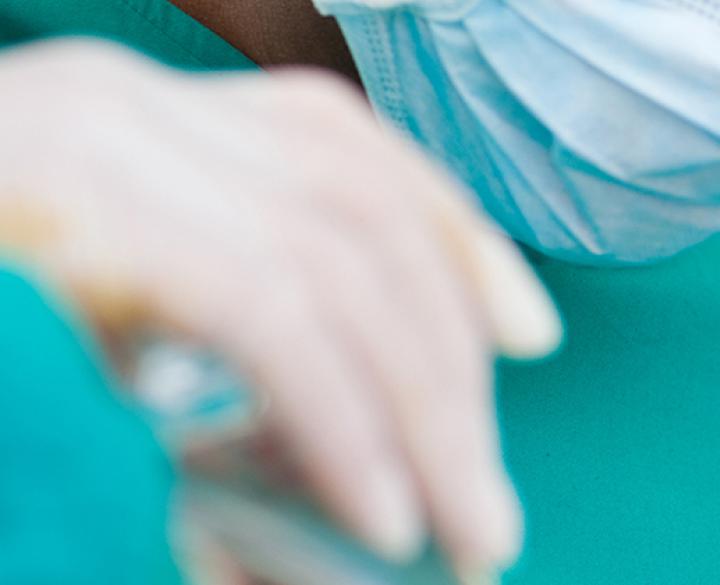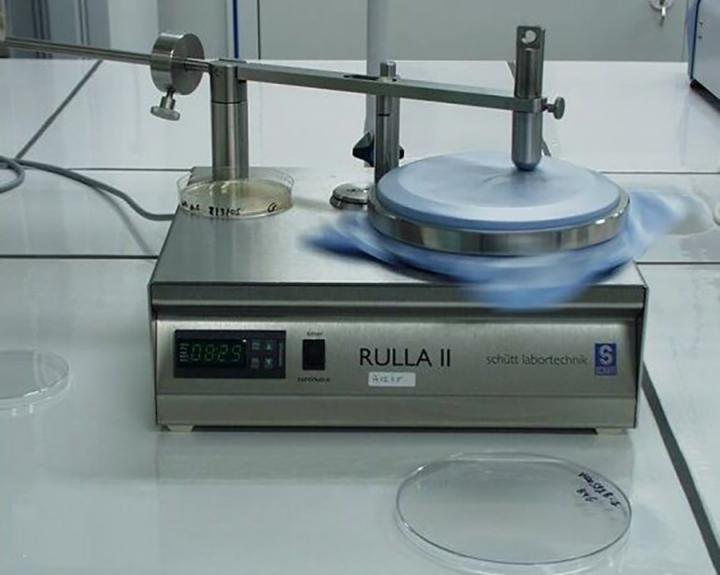Context
The efficiency of textiles to create a barrier against the penetration/proliferation of microorganisms is essential in medical protective clothing or in hospital bedding items. In recent years there has been a huge progress in the development of textile materials and procedures which should effectively protect people against various pathogens.
In a hospital environment it is necessary to select the appropriate textiles that act as an effective barrier against the penetration or transfer of microorganisms in wet and dry state.
In emergency situations, such as an outbreak of SARS or ebola, and more recently of the corona virus, barrier properties against viruses are life saving.
Centexbel has the know-how and equipment to assess the barrier properties of textiles, surgical gowns, masks and drapes, against microorganisms and blood.
Resistance to penetration by infective agents
Standards
ISO 16604: resistance to penetration by contaminated liquid under hydrostatic pressure (ISO 16603 synthetic blood test –screening)
ISO 22610: resistance to penetration by infective agents due to mechanical contact with substances containing contaminated liquids
ISO/DIS 22611: resistance to penetration by contaminated liquid aerosols
ISO 22612: resistance to penetration by contaminated solid particles
Results
Classification of performance levels
Resistance to penetration by infective agents under hydrostatic pressure
Standard
ISO 16603 : synthetic blood resistance penetration
Results
Pass/fail
Successive pressures
- 0, 1.75, 3.5, 7, 14 and 20 kPa (5’)
- 0 kPa 5’-14 kPa 1’-0 kPa 4’
This testmethod is derived from ASTM F1670
Wet bacterial penetration
The European Medical Device regulation specifically places the responsibility for avoiding device-related infections on the manufacturer. In order to demonstrate compliance with this requirement and to describe a product to the user, there is a need to use harmonized and recognized international test methods.
Standard
ISO 22610: Surgical drapes, gowns and clean air suits, used as medical devices, for patients, clinical staff and equipment - Test method to determine the resistance to wet bacterial penetration
Principle
A sheet of donor material, of the same size as the test specimen and carrying the bacteria, is placed on the test specimen with the contaminated side facing down and covered by a sheet of HDPE cover film.
Two conical metal rings, close-fitting into each other, hold the three sheets together. The assemblage of materials is placed on an agar plate with the steel rings hanging freely outside the brim, applying a tensile force. An abrasion-resistant finger is placed on top of the materials with a specified force to bring the test specimen into contact with the agar surface. The finger is moved over the entire surface of the plate in less than 15 minutes by means of a pivoted lever moved by an eccentric cam. The assemblage of materials, stretched by the weight of the steel rings, ensures that only a small area of the test specimen is brought into contact with the agar surface at any given time. Due to the combined effect of rubbing and liquid migration up from the agar surface, bacteria may pass from the donor material through the test specimen down to the agar surface.
The test is carried out for 15 minutes. After 15 minutes the agar plate is replaced by a fresh one, and the test is repeated with the same assemblage, i.e. the same donor and test specimen. Five consecutive tests are performed with the same assemblage enabling an estimation of the penetration over time.
An estimation of the bacterial contamination on the upper side of the test specimen and the bacterial load remaining on the donor material may be determined by using the same technique
Send your samples to
Centexbel - Microbiological Lab
Rue du Travail 5
4460 Grâce-Hollogne
Belgium
+32 4 296 82 00
g-h@centexbel.be






